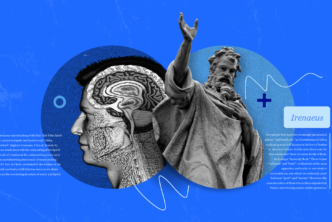Editor’s note: Today we honor of the 73rd anniversary of the death of Dietrich Bonhoeffer. I asked my friend and Durham colleague, Jameson Ross, to write a short piece on the significance of the publication of the critical edition of Bonhoeffer’s Works in both German and English. The release of these dual sets is a monumental achievement, and every theologian (whether academic, pastor, or layperson) should seriously consider adding this comprehensive collection of Bonhoeffer’s writings to their Logos library and reading list. Jameson tells us why below.
When Dietrich Bonhoeffer died in 1945, his legacy was stewarded by his friend, colleague, and one day biographer, Eberhard Bethge. Bethge worked tirelessly for a lifetime not only at his own theological and pastoral vocation, but also at the task of making sure Bonhoeffer’s witness was not forgotten by both concretizing the past and embodying the living witness in the ecclesial and academic communities in which he participated.
A life and works intertwined
Two majorly significant material remains are the products of Bethge’s s work to preserve the memory of Bonhoeffer: the Bonhoeffer house in Berlin, and the seventeen-volume Bonhoeffer Works in German (and now English). The two should be linked because the Bonhoeffer House—complete with museum, tours, and several rooms left as they were at the time of Bonhoeffer’s arrest by the Gestapo—protects the works from abstraction (a point vividly brought home to me on a recent visit to Berlin, in which I saw the German and English volumes together under Bonhoeffer’s roof; editing and publishing made possible a reunion of sorts).

Why the new editions are superior
One of the most significant gains in the new German and English editions of The Bonhoeffer Works is that readers are helped in observing a structural unity. When the first books were released, edited, and published by Bethge—the Ethics fragments, The Letters and Papers from Prison, and The Cost of Discipleship—it was difficult to see how they were related to one another. They were obviously written by the same person, and there were points of contact between the various visions, but without the framework of Bonhoeffer’s life it was hard to relate them to one another.

Volumes 1–8 are devoted to the more-or-less discrete books Bonhoeffer wrote—his two dissertations (Sanctorum Communio, vol. 1; Act and Being, vol. 2), the academic publication Creation and Fall (vol. 3), the various pieces from Finkenwalde (Discipleship, vol. 4; Life Together and Prayerbook of the Bible, vol. 5), his Ethics (vol. 6), and the two “books” from prison (Fiction from Tegel Prison, vol. 7; Letters and Paper from Prison, vol. 8).
These are then situated within the broader frame of Bonhoeffer’s life, with volumes 9–16 covering various stages from early childhood through to the conspiracy period. It should be said that volume 17, the most recently published volume in English and thus completing the series, provides a comprehensive index and additional previously unpublished material.
Thinking alongside Bonhoeffer
The structural unity lends itself to the most significant feature of this set: readers are enabled to pursue interpretive lines of continuity. It is not at all clear that everything the unsystematic theologian Dietrich Bonhoeffer wrote coheres or is continuous, nor does that need to be the case. However, whereas the piecemeal publication of Bonhoeffer’s works early on lead to wild theses about discontinuity, this set provides a lifetime of Bonhoeffer’s writings to allow readers to think along with him as he moves from context to context, changing and adapting through the chaos in which he lived.
Alongside the wonderful biographies of Bonhoeffer, there now stands an incredible set of primary texts, established on the best manuscript and biographical work, inviting exploration and interpretation, and hopefully, as a result, new forms of contemporary witness to Jesus Christ.
Although the idea of having Bonhoeffer’s Works in the print editions is attractive, 34 volumes of anything is less than portable and a monster to research, especially when going back and forth between two languages.
Be a smart scholar: get Bonhoeffer’s Works on Logos, either the complete German-English bundle or in one language, fully integrated with your digital library, completely portable and easily searchable across the entire set.





